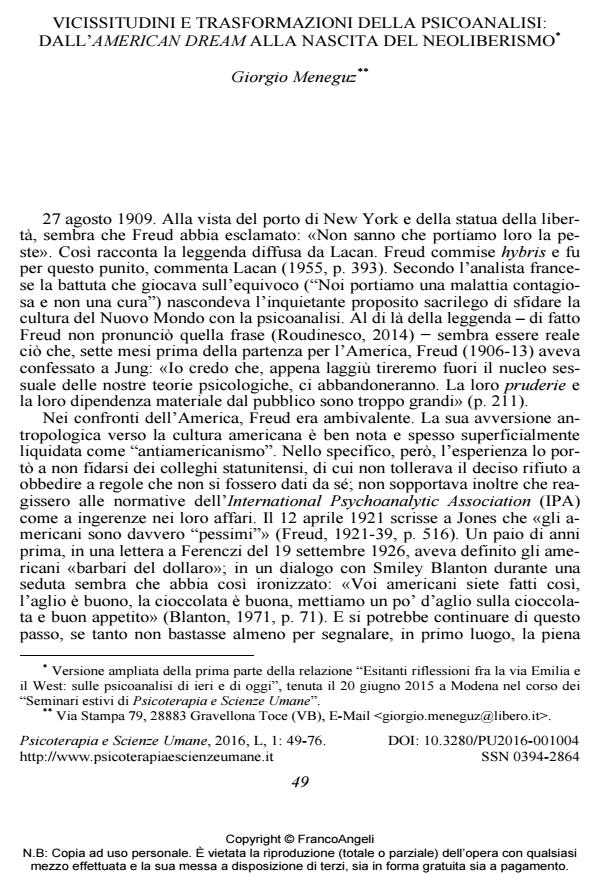Vicissitudes and transformations of psychoanalysis: From the American Dream to the birth of neoliberalism
Journal title PSICOTERAPIA E SCIENZE UMANE
Author/s Giorgio Meneguz
Publishing Year 2016 Issue 2016/1
Language Italian Pages 28 P. 49-76 File size 138 KB
DOI 10.3280/PU2016-001004
DOI is like a bar code for intellectual property: to have more infomation
click here
Below, you can see the article first page
If you want to buy this article in PDF format, you can do it, following the instructions to buy download credits

FrancoAngeli is member of Publishers International Linking Association, Inc (PILA), a not-for-profit association which run the CrossRef service enabling links to and from online scholarly content.
A brief account of some vicissitudes of psychoanalysis in the United States after the expulsion from mainland Europe, caused by the advent of Nazism, is outlined. The influence of the social-historical context in North America on changes in the theory and practice of psychoanalysis is examined, focusing on several factors such as the uncertainty of immigrant analysts, the professionalzation and medicalization of psychoanalysis, and the hostility against politicized analysts. After the description of the historical background, the impact exerted on psychoanalysis by the cultural, economic, political, and social changes caused by neoliberal post-modernity are discussed.
Keywords: History of psychoanalysis, American Dream, North American ego psychology, neo-Freudians, neoliberalism
Giorgio Meneguz, Vicissitudini e trasformazioni della psicoanalisi: dall’American Dream alla nascita del neoliberismo in "PSICOTERAPIA E SCIENZE UMANE" 1/2016, pp 49-76, DOI: 10.3280/PU2016-001004